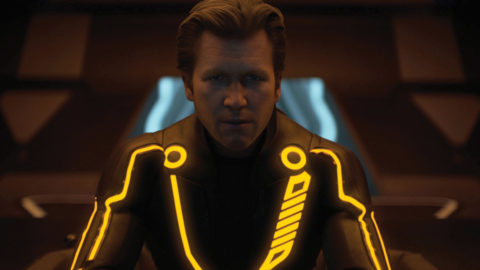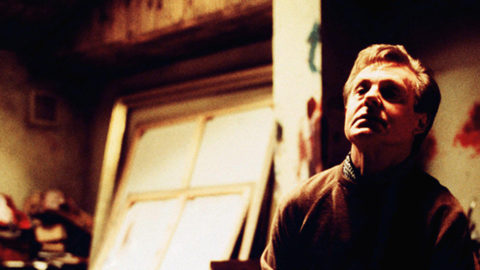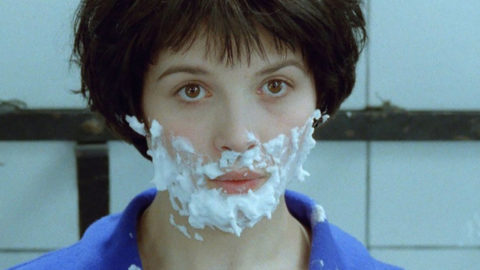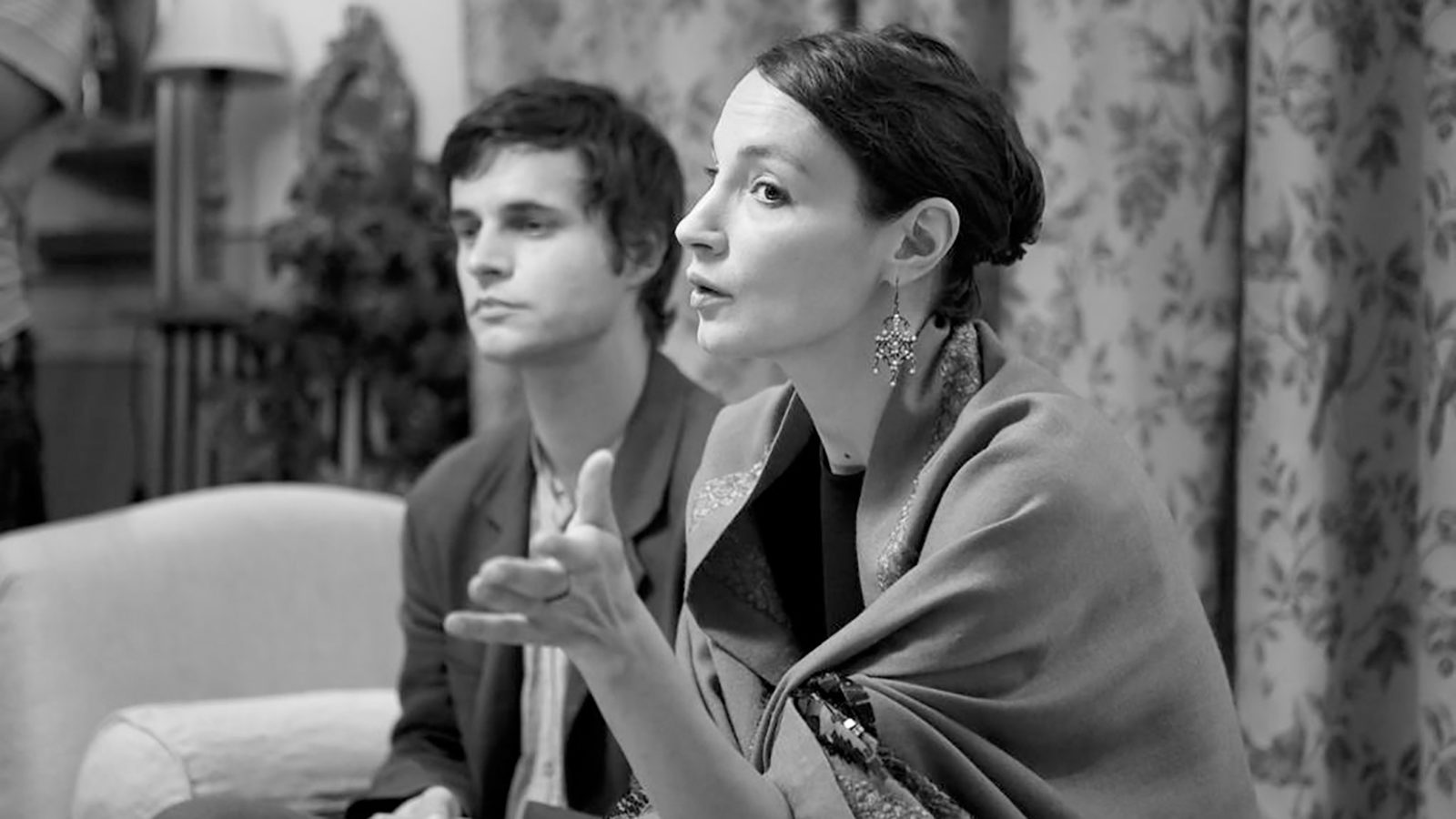
An Innocent Abroad
Any attempt at a cinematic adaptation of Dostoevsky’s The Idiot must first contend with what Andrei Tarkovsky called the “architectonics” of the novel. As he puts it in the notes for his own unmade version, “there are two epicenters in the novel, both creations of genius, separated by nearly five hundred pages. Between them lie two massive parts—the second and third, which are a kind of summary of the first explosion…and the start of a new exposition…”
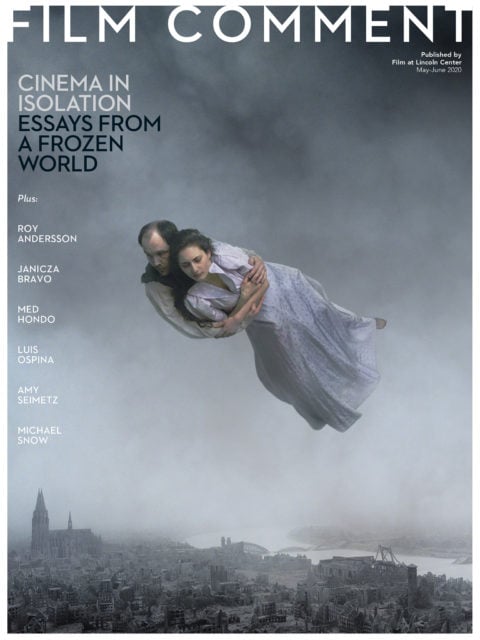
Dostoevsky’s attempt to depict “the positively good and beautiful man,” The Idiot tells the story of Prince Myshkin, who is afflicted not with any lack of intelligence but rather with innocence and epilepsy. Myshkin returns to Saint Petersburg society after a lengthy treatment and is made to confront its hypocrisy and venality. In the capital, he falls in love with the beautiful, victimized Nastasya Filippovna, who condemns her milieu through a more or less conscious self-destruction. This in turn draws him into a rivalry with the menacing rich boy Rogozhin, an homme fatal darkly fixated on her. The first of the two “epicenters,” as Tarkovsky aptly put it, takes place at Nastasya Filippovna’s birthday party, an event that brings together almost all of the principal characters and climaxes with 100,000 rubles (a sum equivalent to more than a million contemporary dollars) flying into the fireplace. The second is the novel’s denouement, which for our purposes can remain unspoiled.
One reason for the novel’s peculiar—even lopsided—construction is the particular set of circumstances behind its creation. Dostoevsky composed it between 1867 and 1869, when he was wracked by debt, gambling addiction, and epileptic seizures. The first part, written in concentrated bursts, was finished by February 1868, and culminates in the first explosion—which is easily one of the best scenes the author ever wrote. It is perhaps because of how perfectly the section is crafted to develop toward this climax, that Dostoevsky struggled to shape the rest of the novel. Accordingly, the overall book has an improvisational, almost provisional quality not wholly unlike its heroine’s tortured indecision, and it was only as Dostoevsky reached the final section that its “inevitable” ending appeared to him as so.
Nonetheless, The Idiot has fairly consistently proven an attractive challenge for filmmakers. Dostoevsky’s influence on the movies is immense—it’s hard to think of many pre-cinematic artists who have exerted an equal or greater pull on the medium (Shakespeare and Caravaggio come to mind). The Idiot is not only one of his greatest works and a keystone of the Western literary canon, but also one of the very best exemplars of a certain archetypal storyline, in which an enigmatic outsider comes into a community, upsets its norms, and in the process reveals it for what it is—a formula that lends itself well to everything from melodramatic tragedy and social drama to screwball comedy. Even so, the architectonics of Dostoevsky’s great novels present such difficulties that truly successful direct adaptations of them remain fairly scarce. (There’s perhaps a reason why the most broadly successfully adapted Dostoevskian work is not The Brothers Karamazov but the comparatively lightweight short story “White Nights.”)
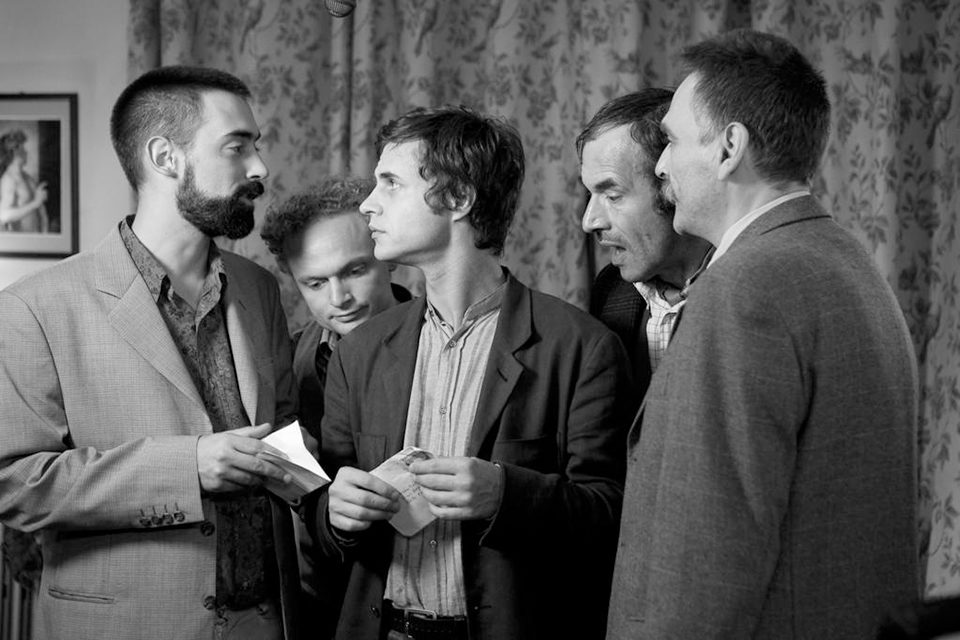
L'Idiot (Courtesy of UniFrance)
Accordingly, when approaching The Idiot, many directors have taken something of a divide-and-conquer approach. Tarkovsky himself hoped to make his film in two parts, a strategy also originally followed by Akira Kurosawa, who was so distraught when his 265-minute cut was reduced to a comparatively approachable 166 minutes that he wrote to his friend Kajiro Yamamoto, that if it must be cut in half, “better to have it cut lengthwise.” The most eccentric iteration is probably Nastasya (1994), the Japanese-language version directed by Andrzej Wajda, which focuses on the novel’s finale, exploring the rest of it through flashback—and which casts the same actor, female-impersonating Kabuki star Bando Tamasaburo as both Myshkin and Nastasya Filippovna. Robert Bresson, cinema’s greatest disciple of the Russian author, more or less sidestepped the problem by employing a comparatively oblique approach: Pickpocket and Au hasard Balthazar are not so much adaptations of Crime and Punishment and The Idiot, respectively, as allegories of the master’s work.
In the spirit of the novel’s hero, the film that’s perhaps the best adaptation conquers through meekness. Made in 2008 by the French director, actor, and critic Pierre Léon, L’Idiot offers the boldest and arguably the most sophisticated approach of all. Clocking in at almost exactly an hour (it’s generously available on the director’s Vimeo page) and confined entirely to a single apartment, the film might at first glance seem an entirely inadequate response to the more than 600 pages of Dostoevsky’s novel. Léon’s gambit is to focus on a single scene, honing in on it with an almost play-by-play fidelity to the book. As such, it’s the most concentrated rendition of the story, but in its own way, curiously expansive.
The scene in question is the first of the climactic moments discussed above. It begins with Myshkin’s arrival at Nastasya’s party, where she is to respond to a peculiar marriage proposal from Ganya Ivolgin, who has been bribed into the arrangement by the bourgeois Totsky. For his part, Totsky, who preyed on Nastasya when she was younger and more vulnerable, now wants her taken off his hands so that he can enter into an advantageous marriage with the daughter of General Epanchin. Over the course of the night, Nastasya will reject Ganya, accept a shock proposal of marriage from Myshkin, and abandon him in turn to run off manically with Rogozhin.
The cast is comprised largely of the director’s immediate peers: Léon himself and critic Bernard Eisenschitz play the general and Totsky, respectively, while Ganya is played by Léon’s fellow filmmaker and Lettre du cinéma writer Serge Bozon. The director’s brother Vladimir plays Rogozhin, and the great Jeanne Balibar, who co-directed Par exemple, Electre (2013) with Léon some years later, delivers a star performance in miniature as Dostoevsky’s antiheroine. This collaborative, handmade quality results in a compelling admixture of naturalism and artifice. There’s a distinctly anachronistic quality to the film—little in the apartment to which the action is confined confers a sense of period, and while Léon dons an old-fashioned moustache, Laurent Lacotte’s Myshkin looks like he could have wandered in from a bar on the contemporary Canal Saint-Martin. Likewise, the Moscow-born Léon never quite specifies where the Russia of the novel ends and the France of the production begins. The actors, of course, speak French, yet the dialogue remains largely true to the Russian source. When Vladimir Léon’s Rogozhin stops the action to sing a plaintive ballad, he does so in Russian, but it still constitutes a sort of rupture in the action.
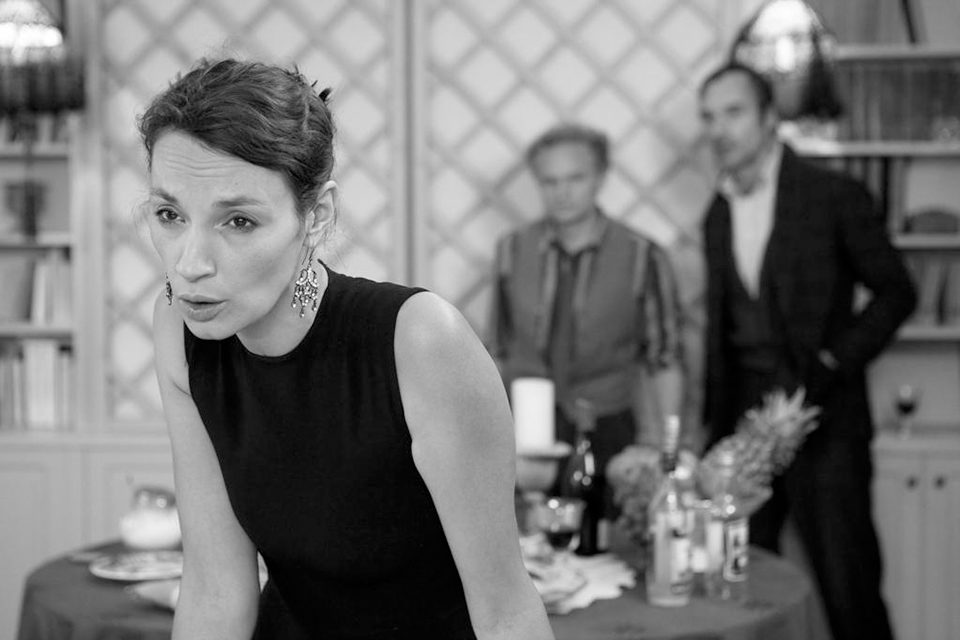
L'Idiot (Courtesy of UniFrance)
This sort of heterogeneity is a large part of what gives Léon’s idiosyncratic film its legitimately Dostoevskian feel. Rather than attempt to condense the whole of the book into his film—a practice that necessarily places an emphasis on thematic interpretation—Léon gives precedence to its parts. This is perhaps best seen in his approach to the characters. Though he may be working with limited resources, one area in which Léon refuses to skimp is the number of performers. The result is a democratic dispersal of attention that captures the plurality of voices that is one of the chief pleasures of Dostoevsky’s prose. The Myshkins, Raskolnikovs, and Alyosha Karamazovs might be the writer’s most celebrated creations, but the Lebedevs, Marmeladovs, and Shigalyevs—minor figures who may or may not be aware that they’re minor—are no less responsible for the singular energy of his work.
Léon nonetheless builds his film on a keen grasp of the overall sweep of the novel, which is what allows his parts to relate microcosmically to the whole. Like the rest of The Idiot, the scene uses the hero’s innocent forthrightness to burrow through society’s layers of falsehood. In both film and book, this process is overseen by Nastasya Filippovna, who acts as both ringmaster and the main audience for the affair, revealingly announcing the arrival of Rogozhin as her “denouement.” As with the element of artifice that Léon adds into his film, Balibar’s Nastasya weaponizes her theatricality as a kind of probe to get the men in her life to reveal their true natures, a process that begins with a silly game in which the guests are asked to describe the worst thing they ever did and culminates in her cruel but cathartic challenge to the materialistic Ganya to retrieve the burning 100,000 rubles from the fireplace.
Yet while the casual pretenses and lies of social life are meticulously taken apart, the question of what’s true remains unanswered—not just in the scene, but in the wider book. Indeed, despite their best efforts, the characters’ quest to comprehend and master their natures never gets beyond the point reached over the course of Nastasya Filippovna’s dramatic birthday. Instead, it remains for the characters to choose their fates. By capturing Nastasya’s cataclysmic decision, Léon and Balibar boil the novel down to its truly decisive moment
Daniel Witkin is a writer and filmmaker based in New York City. His work has been published in Reverse Shot, Film Comment, Cinema Scope, and elsewhere.



